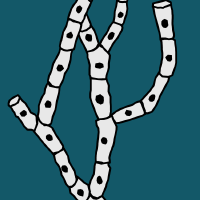Topic Menu
► Topic MenuTopic Editors


Veterinary Infectious Diseases
Topic Information
Dear Colleagues,
Veterinary infectious diseases are factors that impact the health of livestock, domestic animals and wildlife. Their study includes infectious-disease-causing pathogens, epidemiology, diagnostic methods, molecular evolution, immune responses, treatment and prevention. As we know, almost two-thirds of the pathogens that cause diseases in humans are of animal origin, such as SARS-CoV/COVID-19, avian influenza virus, rabies virus, Ebola virus, etc. In addition to those zoonoses, other animal-species-specific infectious diseases, such as Africa Swine Fever (ASF), Classical Swine Fever (CSF), Foot and Mouth Disease (FMD), Newcastle Disease (ND), Lumpy Skin Disease (LSD), African Horse Sickness (AHS), etc., are also extremely important.
Therefore, the scope of this topic focuses on the recent findings in pathogenesis, epidemiology, diagnostic methods, molecular evolution, immune responses, treatment and prevention of animal viral diseases.
Prof. Dr. Chao-Nan Lin
Dr. Peck Toung Ooi
Topic Editors
Keywords
- endemic, exotic, and zoonotic diseases
- animal infectious diseases
- fungal infections
- rickettsial infections
- livestock, wildlife, and domestic animal
- emerging infectious diseases
- host-pathogen interactions
- veterinary epidemiology
- surveillance and evolution
- diagnosis, treatment, and prevention
- diseases eradication and elimination
- medicine and medication
- avian influenza
- avian paramyxovirus
- bluetongue
- bovine virus diarrhea
- classical swine fever
- equine herpesvirus
- fowl pox
- Newcastle disease
- rabies
- transmissible spongiform encephalopathies
Participating Journals
| Journal Name | Impact Factor | CiteScore | Launched Year | First Decision (median) | APC |
|---|---|---|---|---|---|

Viruses
|
3.8 | 7.3 | 2009 | 16.1 Days | CHF 2600 |

Journal of Fungi
|
4.2 | 6.7 | 2015 | 17.1 Days | CHF 2600 |

Microorganisms
|
4.1 | 7.4 | 2013 | 13.4 Days | CHF 2700 |

Life
|
3.2 | 4.3 | 2011 | 18 Days | CHF 2600 |

Microbiology Research
|
2.1 | 1.9 | 2010 | 16.7 Days | CHF 1600 |

MDPI Topics is cooperating with Preprints.org and has built a direct connection between MDPI journals and Preprints.org. Authors are encouraged to enjoy the benefits by posting a preprint at Preprints.org prior to publication:
- Immediately share your ideas ahead of publication and establish your research priority;
- Protect your idea from being stolen with this time-stamped preprint article;
- Enhance the exposure and impact of your research;
- Receive feedback from your peers in advance;
- Have it indexed in Web of Science (Preprint Citation Index), Google Scholar, Crossref, SHARE, PrePubMed, Scilit and Europe PMC.

